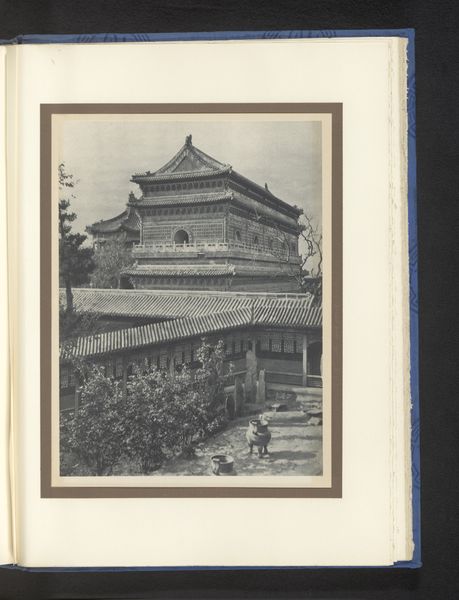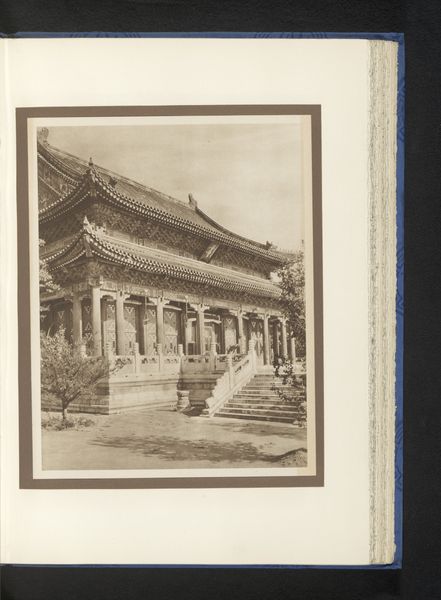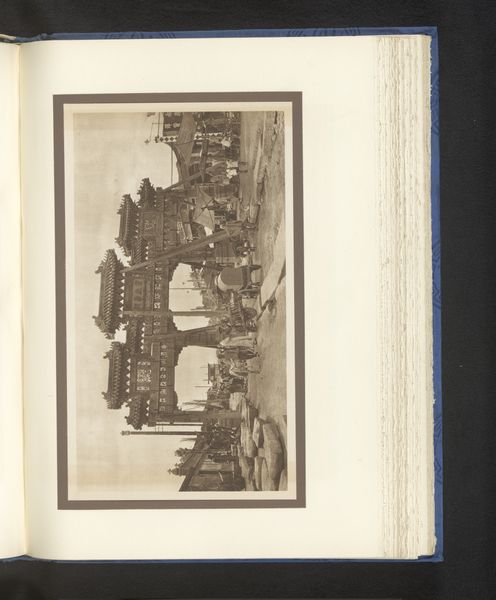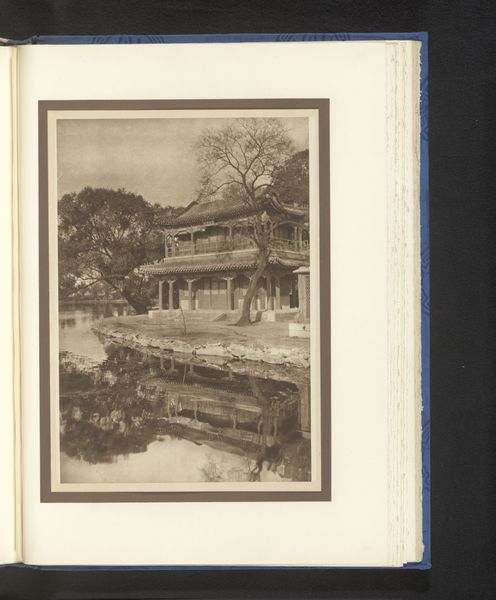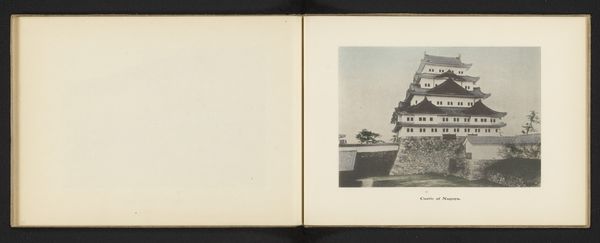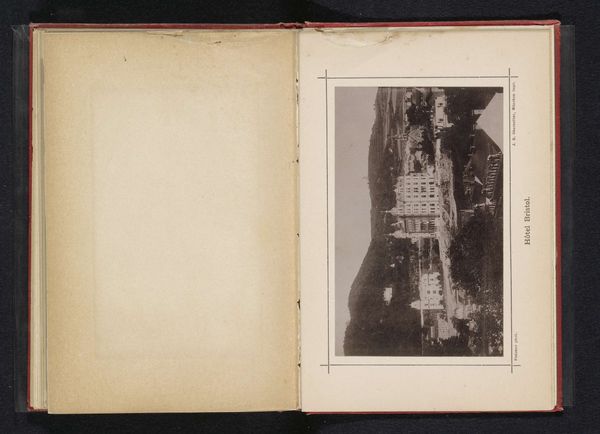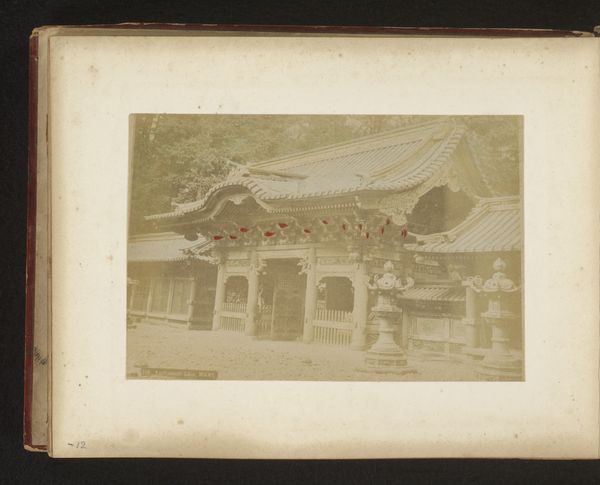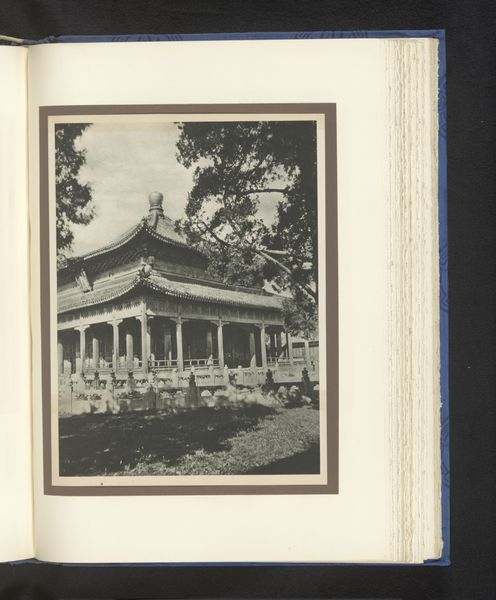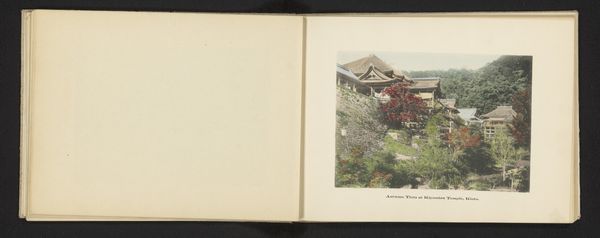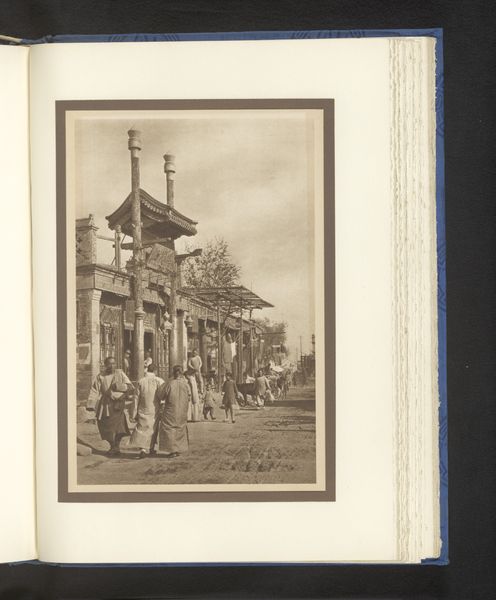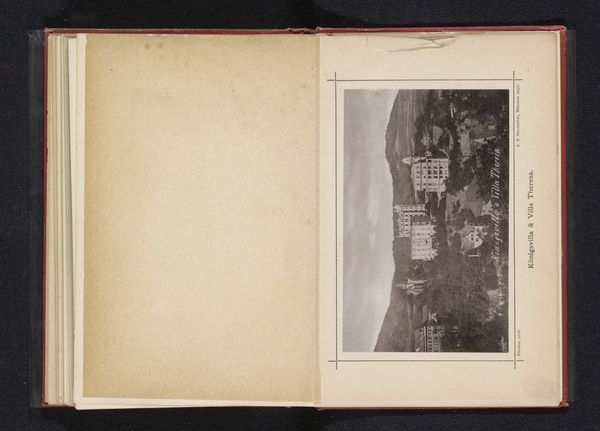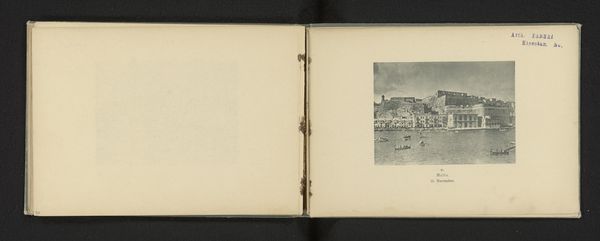
print, plein-air, photography
# print
#
plein-air
#
asian-art
#
landscape
#
photography
Dimensions: height 258 mm, width 202 mm
Copyright: Rijks Museum: Open Domain
Curator: Let’s take a look at "Zomerpaleis te Peking" or "Summer Palace in Peking," a vintage photograph taken by Donald Mennie before 1920. It appears to be a study in capturing the exquisite detail of the architecture in a seemingly natural light. Editor: My initial reaction is one of stillness. Despite being a landscape, the tight cropping focuses on the architectural elements which creates an almost meditative quality, drawing my eye upwards towards those tiered pagoda roofs. The tonal range seems muted, imbuing the structures with a sense of timelessness. Curator: Absolutely, and this timelessness, I believe, is Mennie making a subtle statement. His work often circulated among the colonial elite, and served to create both a longing for "home" and for marking sites like the Summer Palace as places under the authority of European visual consumption. Look how he positions us, slightly elevated. Editor: That elevated perspective provides an interesting point about power, but the roofs also bear very subtle carvings, motifs, possibly of dragons or mythical beasts… Can we tell anything about how those specific choices would have signified sacred space in their cultural moment? I find myself drawn into these details that can easily be missed. Curator: Yes, certainly. The layers of detail visible in the construction – the tiles, the bracketing, the ornamentation – all point to a visual encoding of imperial authority and a connection to heaven. Its reception within elite circles in the West would have bolstered imperial power. Editor: I hadn’t really considered the way the formal composition supported that. What really strikes me now is how effectively it encapsulates an entire symbolic system within a relatively small visual frame. Curator: And consider the photographic technology available at the time. Capturing this kind of detail, on location, in natural light...It demonstrates a considerable commitment to his art as well as reflecting the Western cultural assumptions about viewing China. Editor: It seems there are almost endless ways to view the photograph, shifting between colonial power structures and symbolic imagery. What seemed simply a serene vista initially, becomes more intricate as we look deeper. Curator: Indeed. A seemingly straightforward image that is rich in both historical and symbolic density, a microcosm of complex interactions between cultures and aesthetic values.
Comments
No comments
Be the first to comment and join the conversation on the ultimate creative platform.
